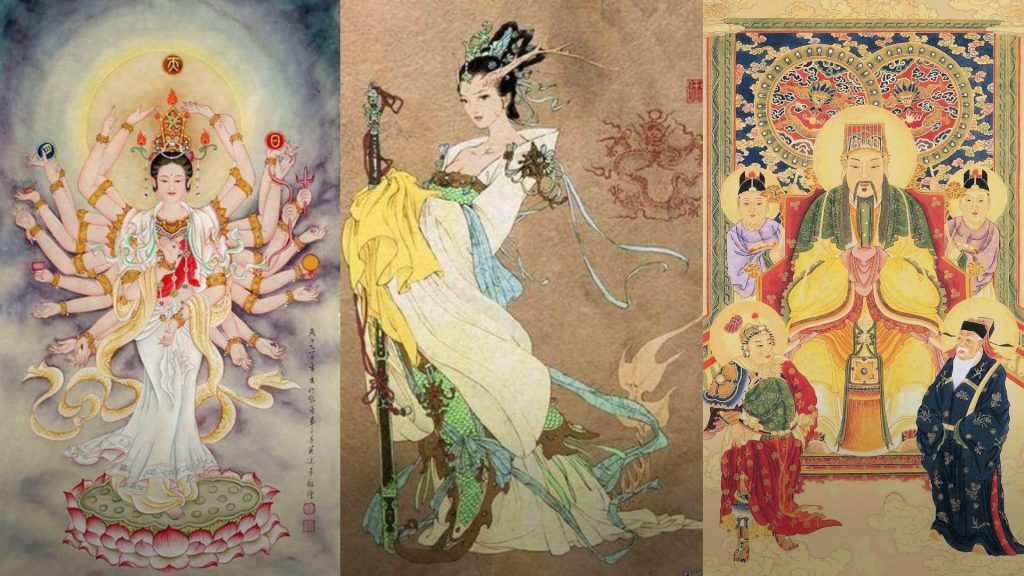This ancient myth is old, very old. The goddess Nvwa is not really part of any modern Buddhist or Taoist pantheon, she appears to come from shamanistic folk legends that predate these religions. Early versions of this myth were included in texts from the Western Han (206 BC – 9 AD), so the story of Nvwa has been floating around for at least 2000 years. There are two main myths regarding Nvwa, our post today is one of them. In the other one, she creates human beings out of mud and clay.
Some language stuff
As always, I’ve highlighted the proper nouns. We’ve got the water god Gonggong (共工), the fire god Zhurong (祝融), Buzhou Mountain (不周山), and the heroine of our tale, the goddess Nvwa (女娲).
I didn’t see anything in here that might trip up advanced readers, probably just new vocab, but there was one weird thing: the placement of the character 晨 seems a little weird to me. It means “morning”, as in 早晨, but I’m only 80% sure I translated its usage in this context correctly. If you have more insight, let me know in the comments.
女娲补天
传说当人类繁衍起来后,忽然水神共工和火神祝融打起仗来,他们从天上一直打到地下,闹得到处不宁,结果祝融打胜了,但败了的共工不服,一怒之下,把头撞向不周山。
不周山崩裂了,撑支天地之间的大柱断折了,天倒下了半边,出现了一个大窟窿,地也陷成一道道大裂纹,山林烧起了大火,洪水从地底下喷涌出来,龙蛇猛兽也出来吞食人民。
人类面临着空前大灾难。女娲目睹人类遭到如此奇祸,感到无比痛苦,于是决心补天,以终止这场灾难。她选用各种各样的五色石子,架起火将它们熔化成浆,用这种石浆将残缺的天窟窿填好,随后又斩下一只大龟的四脚,当作四根柱子把倒塌的半边天支起来。
女娲还擒杀了残害人民的黑龙,刹住了龙蛇的嚣张气焰。最后为了堵住洪水不再漫流,女娲还收集了大量芦草,把它们烧成灰,埋塞向四处铺开的洪流。
经过女娲一番辛劳整治,苍天总算补上了,地填平了,水止住了,龙蛇猛兽佥欠迹了,人民又重新过着安乐的生活。但是这场特大的灾祸毕竟留下了痕迹。从此天还是有些向西北倾斜,因此太阳、月亮和众星晨都很自然地归向西方,又因为地向东南倾斜,所以一切江河都往那里汇流。




